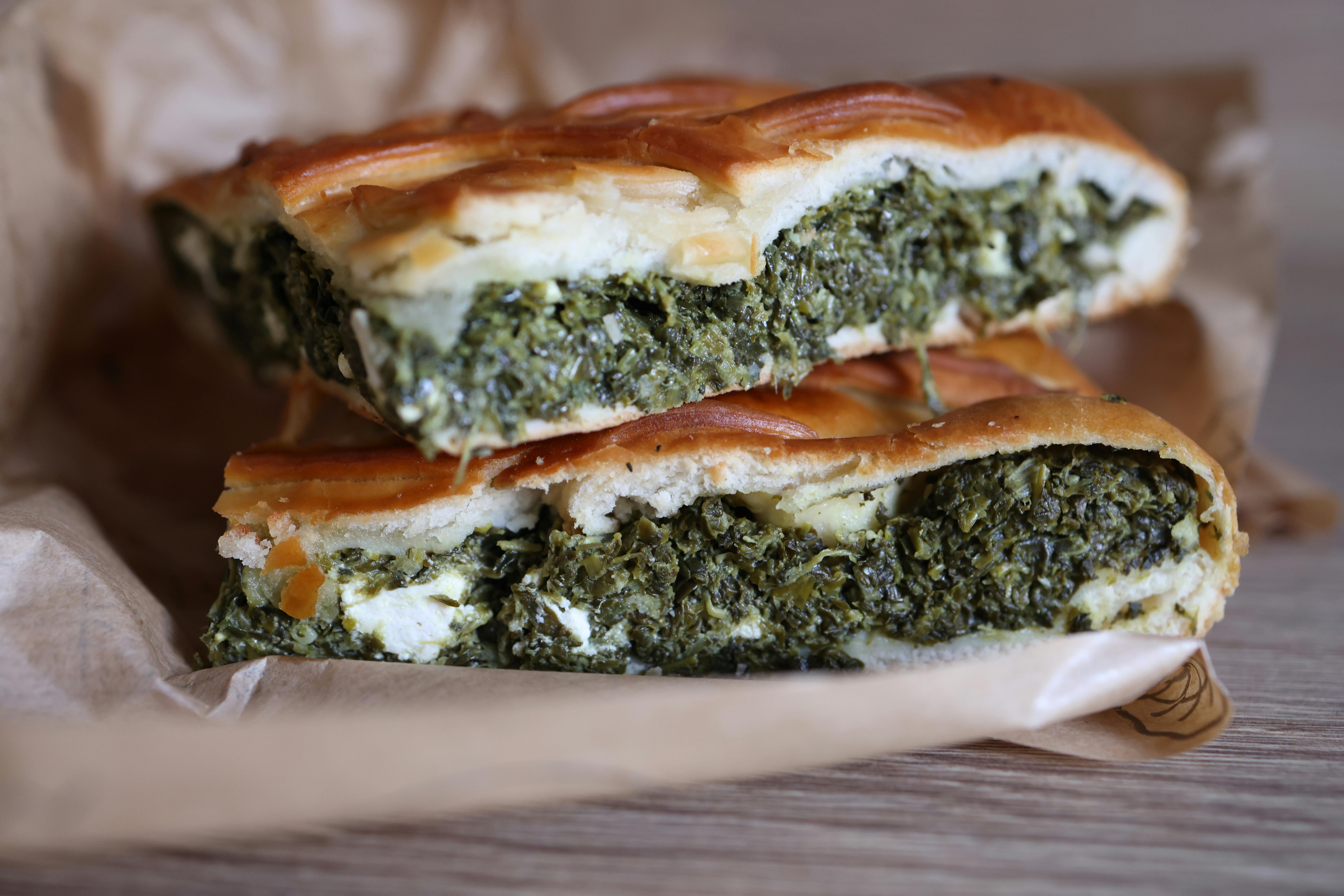There’s a certain joy in the first signs of spring – the return of soft sun, wild greens and the slow shrugging-off of winter’s heaviness. In Greece and Cyprus, one dish captures this transition more deliciously than most: spanakopita.
Flaky, buttery and packed with bright green spinach and sharp cheese, spanakopita is both a staple of the Greek and Cypriot kitchen and a seasonal celebration wrapped in filo.
Though widely eaten year-round today, spanakopita’s origins are rooted in seasonal, practical traditions. In rural villages, home cooks would make use of whatever was fresh – and in spring, that meant wild greens. Spinach, of course, was common, but so were other foraged herbs and leaves like chard, sorrel, or amaranth. These were chopped, salted, mixed with tangy feta or local cheeses, and wrapped in thin pastry to form pies that could feed a family for days.
Historians suggest that spanakopita may have roots in the Byzantine era, with culinary links to Ottoman and Levantine pies. The use of thin, layered pastry can be traced across the region – from Turkish börek to Middle Eastern fatayer. But in Greece and Cyprus, the evolution of spanakopita became uniquely local, each region developing its own version, shaped by the ingredients available and the tastes of the area.
In Epirus, pies might be heavier and more rustic; in Crete, lighter and filled with wild herbs; in Athens, you’re more likely to find the neat, golden triangles familiar from bakeries around the world. And in Cyprus, spanakopita often features a thicker, more bread-like pastry and is generously filled with local greens and tangy anari or feta, reflecting the island’s rustic, home-style approach to pies.
The classic filling combines spinach, feta cheese, eggs, onion or leek, and sometimes a scattering of fresh dill or mint. But even this varies. In Lenten or fasting periods, dairy may be omitted. In mountain villages, feta might be replaced with myzithra or kefalotyri. And for home cooks with gardens, spanakopita becomes a blank canvas for whatever greens are abundant.
What has made spanakopita endure is not just its flavour, but its flexibility. It can be a main meal or a side dish, a picnic snack or a Sunday centrepiece. It’s equally at home in a bakery window or wrapped in foil for a school lunch. And though it speaks with a distinctly Greek accent, it has found fans all over the world – a food that transcends borders while keeping its roots.







Click here to change your cookie preferences